Local Help When You Need It: Get Support
At Colorado Valley, we believe support should be just as reliable as the service we provide. Whether you’re setting up your home phone, need help with your internet connection, or have a question about your account, our local team is ready to lend a hand. You’ll find answers to common questions, downloadable forms, and helpful tips to keep your service running smooth. We’re proud to serve Fayette, Colorado, and Lavaca counties and the surrounding areas with friendly, knowledgeable support—day or night. No long waits, no confusing menus—just real people who care about keeping you connected.
Still Need Help? Let’s Talk
Sometimes the best support comes from a real conversation. If you didn’t find what you were looking for in our resource library or FAQs, our local team is ready to help. Whether it’s a quick question or a deeper issue, we’re just a click or call away.
Frequently Asked Questions
Got a question? You’re not alone. We’ve rounded up answers to the most common questions about billing, internet, phone service, and more—so you can find what you need without the wait.
An easement is a written document signed by the landowner, which grants Colorado Valley Telephone Cooperative (Colorado Valley) permission to access and use a portion of the landowner’s property to construct, maintain, operate, repair, replace, relocate, and remove any of the necessary components for supplying services to its members. The easement must be signed by the landowner or the landowner’s authorized representative before a notary public. The signed and notarized document is filed with the county clerk, in the county the property is located in, and is linked to the property deed. The easement may grant access to the property to place aerial or buried facilities (or both). Easements may be for accessing the property to place facilities to the landowner. They may also provide for extending services to properties belonging to other Colorado Valley members.
The pole attachment agreements Colorado Valley has with the power companies requires that Colorado Valley obtain its own easement even though the facility will be on poles that are on a power easement.
In some instances, it will be necessary for CVCTX to request easements to cross property lines with our fiber optic cables. We ask that you please consider granting easement access in order to help us connect service to you and your neighbors.
It only takes 3 easy steps:
- Complete Telecommunications Easement Form.
- Easement Form will need to be notarized.
- CVCTX have notaries in the office to assist with notary services.
- Original signed/notarized copy returned to:
- P.O. Box 130, La Grange, TX 78945
CVCTX delivers multi-gig to the ONT. Actual service speed will depend on the use of WiFi, WiFi equipment, age and capabilities of the customer’s devices. Our multi-gig plans come with whole home WiFi at WiFi 6 speeds. That means if you have WiFi 6-enabled devices you’ll be able to experience the fastest speeds available. If your devices aren’t WiFi 6-enabled (from 2020 or earlier), they’re likely not built to go as fast as the wireless speeds that multi-gig internet offers. If you’re not sure whether your device has WiFi 6, you can check with the manufacturer or search your device’s specs online.
- Wired vs. wireless connections – Actual speeds experienced will vary, especially when accessing the Internet wirelessly. A wired Ethernet connection will maximize the benefits of gigabit Internet. For wireless connections using WiFi, ensure the router supports the latest generation of WiFi, currently WiFi 6.
- Ensure the router is updated. Older routers cannot handle gigabit bandwidth.
- Use a fast Ethernet cable and adapter (wired connections).
- Connect adapter to fast USB. Remember, not all adapters are compatible with all devices.
- Use a fast switch for multiple devices. Make sure the switch you use is compatible with multi-gig speeds.
- Go faster over WiFi
- Generally, the closer you are to the router, the faster your speed.
- Obstructions, such as walls and other obstacles can block WiFi signals. WiFi connections may also pick up interference from signals sent from microwaves, phones, baby monitors and other devices.
- Some devices won’t be able to handle multi-gig speeds (like 5 Gig) even with a wired connection, simply because they’re not up-to-date. There are several things you can do to bridge those gaps, including updating your operating system and having a new network card installed.
- Devices like phones and laptops connected to your Internet will also need to support the latest WiFi standards in order to get the fastest speeds.
A hosted voice service is a cloud-based phone system managed by CVCTX, offering flexibility, advanced features, and remote access for your business.
A MAC (Move, Add, Change) plan is a monthly subscription-based service for hosted voice systems. For a fixed monthly fee, you can make changes—such as moving equipment, adding users, or updating features—at any time and in real time, without extra charges or delays for individual requests. This gives you flexibility and predictable billing, instead of being charged separately for each change.
Yes! We make porting your current numbers easy and seamless.
We offer local, 24/7 support with fast response times and proactive system monitoring.
Absolutely. Your communications are protected with end-to-end encryption and enterprise-grade security protocols.
CVCTX offers three primary residential internet services: DSL, Fiber, and Fixed Wireless. Each is designed to meet different needs and location requirements, offering fast speeds and reliable performance without data caps.
DSL uses your existing telephone network’s copper wires for connectivity, offering reliable performance.
Fiber is the “gold standard,” providing ultra-fast speeds, ideal for heavy streaming and gaming. Fiber provides internet by transmitting data as pulses of light through thin strands of glass or fiber optic cables. This direct light-based connection enables incredibly fast speeds and low latency.
Fixed Wireless delivers high-speed internet via radio waves from a local wireless tower to an antenna at your location, making it an excellent option for rural areas where traditional cabling is less feasible.
No, all residential internet services offered by CVCTX come with no data caps. This means you can stream, game, and browse without worrying about exceeding data limits.
Data limits refer to the maximum amount of data you can use within a billing cycle, while bandwidth refers to the maximum rate at which data can be transmitted over your internet connection. Essentially, data limits are about how much you can use, and bandwidth is about how fast you can use it.
For Fixed Wireless internet, a receiver is installed at your home or office to communicate with a wireless base station. Depending on the frequency system and potential obstructions, a pole might be installed to ensure optimal service quality.
CVCTX provides 24-hour technical support that can be reached by calling 877-452-9035.
CVCTX primarily serves rural areas within the following communities:
- Ellinger
- Fayetteville
- La Grange
- Round Top
- Schulenburg
- Weimar
- Rural areas within Fayette, Colorado and Lavaca Counties
We are also actively expanding our network to new areas.
As permitted by the Federal Communications Commission (FCC) rules, the Access Recovery Charge enables telecommunications providers to recover a limited portion of revenues lost due to FCC-mandated reductions in intercarrier payments. This charge helps keep the cost of your local service affordable.
Basic Local Service is a monthly charge for the dial tone that allows you to make and receive telephone calls. It also includes the right to be listed in the telephone directory and to receive a copy of the directory.
This is a monthly charge on your local telephone bill that helps local telephone companies recover some of the costs associated with the telephone lines connected to your home or business. This fee is regulated and capped by the FCC. It is not a tax or a fee charged by the government.
This is a charge prescribed by the FCC to help keep local telephone service rates affordable for all customers across the United States. The funds support programs that make sure people in rural areas, low-income customers, and schools and libraries have access to telecommunications services.
This is a state-specific charge that is a percentage of intrastate telecommunications service receipts. The purpose of the Texas Universal Service Fund is to ensure that all residents of Texas can afford to obtain basic telecommunications services.
This charge is added to your bill to support the operation of the 9-1-1 emergency telephone service in your county. The fee helps fund the telecommunications systems that support quick response for police, fire, and ambulance services.
This is a state-mandated monthly charge on all non-exempt local exchange access lines, equivalent access lines, and wireless telecommunications connections. The funds support regional planning commissions and poison control centers, among other services.
This charge is only applied to customers in municipalities or towns. It is a fee that compensates the local government for the use of public rights-of-way—such as streets, alleys, and utility easements—for the installation and maintenance of telecommunications equipment.
This fact sheet provides the complete inbound (IMAP) and outbound (SMTP) server settings, SSL/TLS requirements, maximum mailbox quota (15GB), message size limits (100 MB), recipient limits, and rules for creating a strong password.
This document provides guidance on post-conversion access, including rebooting devices, how to access the Webmail and eScout Spam Filter , explains that usernames with a dot (.) are now provisioned with an underscore (_) for login, and advises users how to address the potential re-downloading of old or duplicate messages.
A local call is a telephone call made within a specific geographic area, known as a “rate center,” without incurring a long-distance or toll charge.
If a call you are trying to make is not local, you will hear a message letting you know that your call cannot be completed as dialed.
The following exchanges may call Borden, High Hill, Hostyn, Moravia, Plum, and Warrenton as a local call. Additionally, you can generally make local calls between the rate centers listed below.
979-725 (Weimar): You can call Flatonia, La Grange, and Schulenburg locally.
From your CVCTX number:
979-263 (Borden): You can call Weimar locally.
979-404 (Fayetteville): You can call La Grange locally.
979-212 (Giddings): You can call Dime Box, Lexington, Northrup, and Paige locally.
979-561 (High Hill): You can call Schulenburg locally.
979-247 (Hostyn): You can call La Grange locally.
979-206 (La Grange): You can call Fayetteville, Flatonia, and Weimar locally.
979-562 (Moravia): You can call Hallettsville and Schulenburg locally.
979-242 (Plum): You can call La Grange locally.
979-743 (Schulenburg): You can call Flatonia and Weimar locally.
979-249 (Warrenton): You can call La Grange locally.
Making an international call is a great way to stay connected, but understanding the rates is important. The following is a list of our rates for some of the most popular countries. All rates are listed per minute.
Please Note: Rates can change, and the prices below are for informational purposes. For the most current rates, please call us.
- Alaska: $0.29
- Argentina: $0.12
- Austria: $0.12 (Landline), $0.49 (Cell)
- Canada: $0.12
- Costa Rica: $0.13 (Landline), $0.17 (Cell)
- Germany: $0.24 (Landline), $0.53 (Cell)
- Hawaii: $0.29
- Mexico: $0.29 (Landline), $0.39 (Cell)
- Netherlands: $0.12 (Landline), $0.43 (Cell)
- New Zealand: $0.12 (Landline), $0.72 (Cell)
- Panama: $0.44 (Landline & Cell)
- Puerto Rico: $0.27
- South Africa: $0.15
- Sweden: $0.12 (Landline), $0.45 (Cell)
- United Kingdom (UK): $0.12 (Landline), $0.40 (Cell)
- Uruguay: $0.23 (Landline), $0.47 (Cell)
- Zimbabwe: $0.20 (Landline), $0.45 (Cell)
Need a quote for a country not on this list? If you need a quote for a country that is not listed above, please give us a call. Our team can provide you with the most up-to-date pricing.
Call us at 242.CVLD (2853) or toll-free at 1.877.242.CVLD (2853).
You can find the full Terms and Conditions for Long Distance Service here: Terms and Conditions for Long Distance Service
Understanding Fiber
Colorado Valley Communications Fiber Project is an exciting undertaking where we bring Fiber-to-the-Home (FTTH) and Fiber-to-the-Premise (FTTP) technology to homes and businesses in-and-outside our cooperative service area. This fiber technology will allow our members/customers to have access to ultra-fast, ultra-reliable internet service.
CVCTX, and our Board of Directors, have committed to a substantial fiber expansion project in order to address and accommodate the internet needs of our members/customers by facilitating considerable upgrades to the network infrastructure.
A fiber connection will provide you with a fast, reliable and high quality connection with virtually unlimited streaming capabilities for all your online activities. Here are some ways fiber could benefit you:
- Super fast speeds (uploads/downloads)
- Reliably stable connections
- Enough bandwidth to connect all your devices to Wi-Fi
- Unlimited Internet usage (no data caps!)
- Virtually no maintenance
- Improved productivity
- Less vulnerability to glitches or interferences – even from weather
- Secure voice and data transmissions
Enjoy a better experience with entertainment, work and other online activities like:
- streaming movies and music
- online gaming
- shopping
- telehealth
- cloud storage
- online research/education
- work form home
- and much more
Think of bandwidth or internet speed as traffic on a highway. In your home, each device can be considered a car on the road. Each device or car causes increased congestion. The more bandwidth or the more lanes, the more freely traffic can flow. The goal for a great customer experience is to have more available bandwidth than required by the end-user.
CVCTX has internet packages for every need. As a ‘general’ gauge, here are some download speed requirements based on everyday online activities:
- Check email and basic internet browsing (2 or fewer devices): 1-5 Mbps minimum
- Stream HD content (2 or fewer devices): 15-25 Mbps minimum
- Stream 4K content and online gaming: 40-100 Mbps minimum
Fiber is the most reliable technology available that also provides unprecedented connection speeds that is not limited by the distance of your location to certain network elements. Fiber optic infrastructure delivers data via light signals through small, flexible glass wires and is unmatched in terms of reliability relative to any other internet service, voice or video delivery method.
DSL is an internet connection provided via copper lines that, while also reliable, is limited in the speed available as determined by the distance of your location to the remote or DSLAM in the network. Currently the maximum speed available over DSL is generally 25 Mbps download and 3 Mbps upload with some faster speeds available in some areas, but this availability will be determined by the location of your home or business. Depending on your internet needs, this may be plenty of bandwidth for the services you use.
Whether getting service over copper or fiber, Colorado Valley is continuously working to provide the best telecommunication experience for our customers.
Interest & Sign-Up
No. The online ‘interest’ form is intended solely as a tool/resource for CVCTX to identify which neighborhoods have the highest interest in fiber services.
Note…Fiber installation can be an expensive undertaking for any communications company. Areas where CVCTX concentrates its efforts on building out networks first are based on density of requests. Be sure to share your interest and online sign-up with your neighbors. The more people in one service request area, the faster we can build to them.
Once enough interest is shown within an area or neighborhood, we’ll start the pre-registration phase to determine the level of commitment within the neighborhood.
If there is sufficient interest, we’ll schedule the construction process in that neighborhood (Fiberhood).
We encourage anyone that is interested in Fiber-to-the-Home (FTTH) service to discuss the benefits with their friends and neighbors. Areas or zones that do not show significant interest may not be constructed.
The first step is sign up. Interested in fiber service? Sign up today.
We love living in the rural area, but these wide-open spaces do present some challenges, especially when it comes to deployment of a fiber-to-the-home (FTTH) network. Some of the challenges that could prohibit or delay your access to FTTH include:
- Time: The construction of a new FTTH network is a tremendous endeavor, especially in rural areas where the distances between homes can be great. The last mile of the internet is usually much more than a mile in our area, and describes the term for the last stretch of fiber that connects your home to the backbone of the internet, which is the series of networks that connect the internet across the world. To get this last mile of fiber to your home there are several steps involved, which include network design and Engineering, placing duct, blowing in fiber, setting pedestals, splicing the fiber, installing the Optical Network Terminal (ONT) and testing. As you can imagine, it will take some time to reach many homes, which is why our FTTH project is being planned as a multi-year project. You may see existing fiber near your home that is potentially not part of our FTTH network but is instead part of our transport network. The transport network aggregates all of our customer data for delivery to the backbone and is not available for FTTH.
- Distance/Cost: Fiber from one node in our network to your home may follow a circuitous route depending on terrain and available right of way off a county or state road. Other obstacles like buried fiber versus aerial fiber can dramatically affect costs, thus affecting availability of FTTH. We understand it can be frustrating when a home near yours can get FTTH but you cannot. Unfortunately, that may depend on existing network resources and your proximity to those. Further, in the rural area, your neighbor may be several thousand feet or more away and the cost of extending fiber from them to you could be tens of thousands of dollars. For example, our average cost to place transport fiber is $50,000 to $60,000 per mile. The average cost for the last mile in our FTTH network is over $ 6,200 per customer.
- Availability of Resources: There are many elements required in a FTTH network in order to deliver high speed internet over fiber. In addition to the fiber optic cables, these elements include conduit, cabinets, optic terminals, optical amplifiers and more. Internet Service Providers (ISPs) of all sizes are competing for these resources, which can cause shortages and delays to our construction. Interruptions to the supply chain can further delay access to these resources and thus delay the delivery of FTTH to you.
These factors and more could contribute to FTTH not being available at your home yet. After all, there is a reason the larger providers aren’t deploying a fiber network in our rural communities. We appreciate your patience as we build out our fiber network.
In the meantime, we also deploy other technologies to provide broadband Internet where FTTH is not available. Improvements in DSL and Fixed Wireless technologies allow us to offer more bandwidth than ever before over these platforms and we take this into consideration when building our network. As technology continues to evolve, so will our network, so that you may have the best internet experience and experience all the best that comes with life in the country.
In situations where costs to deliver service are over and above costs for standard installation, an additional payment known as “aid to construction” may be required in addition to the standard installation fee. This additional fee will cover a portion of the costs of the facilities required to deliver service. If it is determined that aid to construction is required at your location, a company representative will work with you to communicate the payment amount. Construction will not begin until this process is complete and payment has been received.
Construction & Installation
During the fiber installation process, CVCTX will construct a network of fiber-optic cables which use light instead of electricity to carry a digital data signal. Installing Fiber has many steps – from building the network to construction and installation to your home:
- Sign up online (let us know you’re interested)
- Building the Fiber network
- Construction plan for your community
- Engineering & preparation
- Underground investigation
- Access rights to property
- Permitting (local/state)
- Depending on the location of your home, a county permit or state highway permit may be needed before your service can be installed. This may affect your service installation date, however, CVCTX works closely with agencies to get permits approved in a timely manner (as quick as possible).
- Utility poles examination
- Construction
- Scheduling installations
- Staking appointment – This appointment is different from installation appointment and may happen several weeks before installation. This will determine where the fiber drop to the home will be placed. Note…Someone will need to be home to meet the technician(s).
- Home and business sites need to have electricity in place (not just a temporary connection) and walls up before any service or installation can be provided.
- Installation appointment
- Relax…It’s time to enjoy your Fiber service!
- Depending on the location of your home, a county permit or state highway permit may be needed before your service can be installed. This may affect your service installation date, however, CVCTX works closely with agencies to get permits approved in a timely manner (as quick as possible).
- CVCTX will first install the main fiber lines along the roadway/highway. Think of this as the ‘main pipeline’ for the Fiber network.
- Once the main line is installed, we will begin contacting you for your permission to install a smaller fiber line to your house.
- Several weeks before scheduling an installation appointment, we will schedule a staking appointment. The staking appointment is to help us determine where the fiber drop to the home will be placed. NOTE…Someone will need to be home to meet the technicians.
- Next, we will bury the fiber (through your yard or property) – connecting your house to the main fiber line. This is done with minimal disturbance to your yard and, in most instances, you do not need to be home. Discussions between customer and technicians will determine whether or not you will need to be present during the staking process.
- After that, we will schedule a time that is convenient for you to be home so that we can complete the installation of equipment inside of your home.
- After the equipment is installed at your home, you can start taking advantage of a much higher speed Internet!
There are 2 parts to the installation:
- The second part is the installation process (inside your home).
Yes. You will need to be home. We will work with you to coordinate a time that we can install the rest of the required equipment inside of your home. - The first part which involves burying the fiber line to your home (Fiber drop outside).
No. Our professional contractor team can take care of the outside portion as long as there’s no threat of injury, damage or dogs.
Since CVCTX buries the fiber line in order to protect the cable from weather and accidental cuts, it is likely we will need to dig in your yard/property. CVCTX will do everything we can to make sure to minimize any disturbance to your property, and we’ll work hard to restore your property as close to its original condition.
Because we do not disconnect your old copper wiring until the fiber installation is completed (equipment installed inside of your home), you should not experience any service interruption. When we install the equipment inside of your home, you will experience a very short outage while we change out the equipment, however you will be home when this occurs.
- Network Interface Device (NID) on the outside of home/office (excluding fiber service)
- Ethernet jack
- Power/battery supply
- Optical Network Terminal (ONT)
- The ONT contains electronics that terminate the fiber-optic cable and converts the signals of light back into usable internet signals.
When our technicians arrive to install the necessary conversion equipment inside your home, they will also check your inside wiring to see if any upgrades need to be made. If your wiring or equipment needs to be upgraded, your CVCTX technician can perform the work for you at that time or at later agreed-upon date. Additional costs may be associated with this service, so please speak with a CVCTX representative for estimates if applicable.
- Think about where you might like the equipment installed but stay open to suggestions from our trained technician(s).
- If you have any devices that are currently connected to your modem/router using an Ethernet cable, consider the ideal location of these devices and where you want to locate your new CVCTX modem/router. Depending on the layout of your home and where your new router is installed, you may need to run new wires to connect these devices. Our Technician(s) can help you with additional wiring needs during or after your scheduled install at our low, hourly time & materials rate.
- Clear your personal items out of the areas where you think the technician(s) might be working.
- Make sure you have available power outlets to provide service to any new devices, including cable boxes, your modem/router, or any additional wireless access points.
- Make sure permanent power is in-place and available the day of install – not temporary power for builders.
Additional Terms & Definitions
The Clamshell is a protective housing placed on a home or building to connect the drop to the inside Fiber cable/optic. Within this housing, CVCTX will make a splice to separate the two different cabling systems. This housing is also in place to allow CVCTX to troubleshoot cable without accessing your residence should a problem arise.
The Fiber Conduit is a small orange conduit used to protect the Fiber Drop from rodents and shovels. The Fiber Conduit is not indestructible but does serve its purpose to help protect your cable.
The Fiber Drop is a small black cable made up of one strand of glass from the pedestal to the Outdoor Unit (ODU) or commonly referred to as a Clamshell.
Fiber Optic Cables are bundles of glass strands independent of one another that carry signals from the transmitter to the receiver (i.e. CVCTX to customer, customer to CVCTX).
The ONT is the device in your home that terminates and receives the signal from your connected devices; Telephones and Internet capable devices. The ONT’s CVCTX is using are best-in-class with extremely powerful wireless signaling capabilities.
The Pedestal is the green cylinder you see at property corners. The Pedestal contains all the cabling that services you and your neighbors.
Resource Library
Security
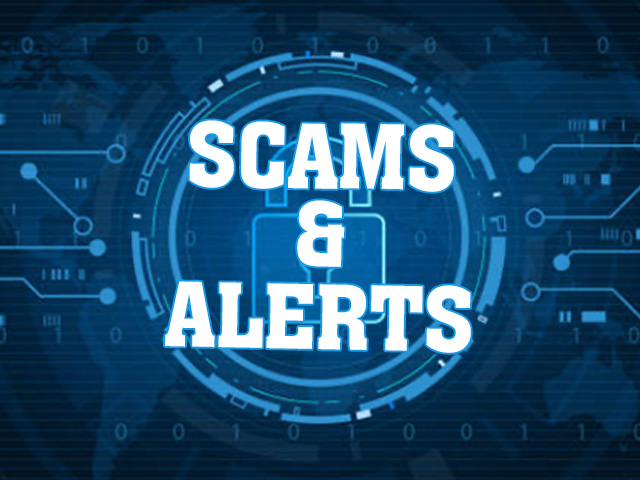
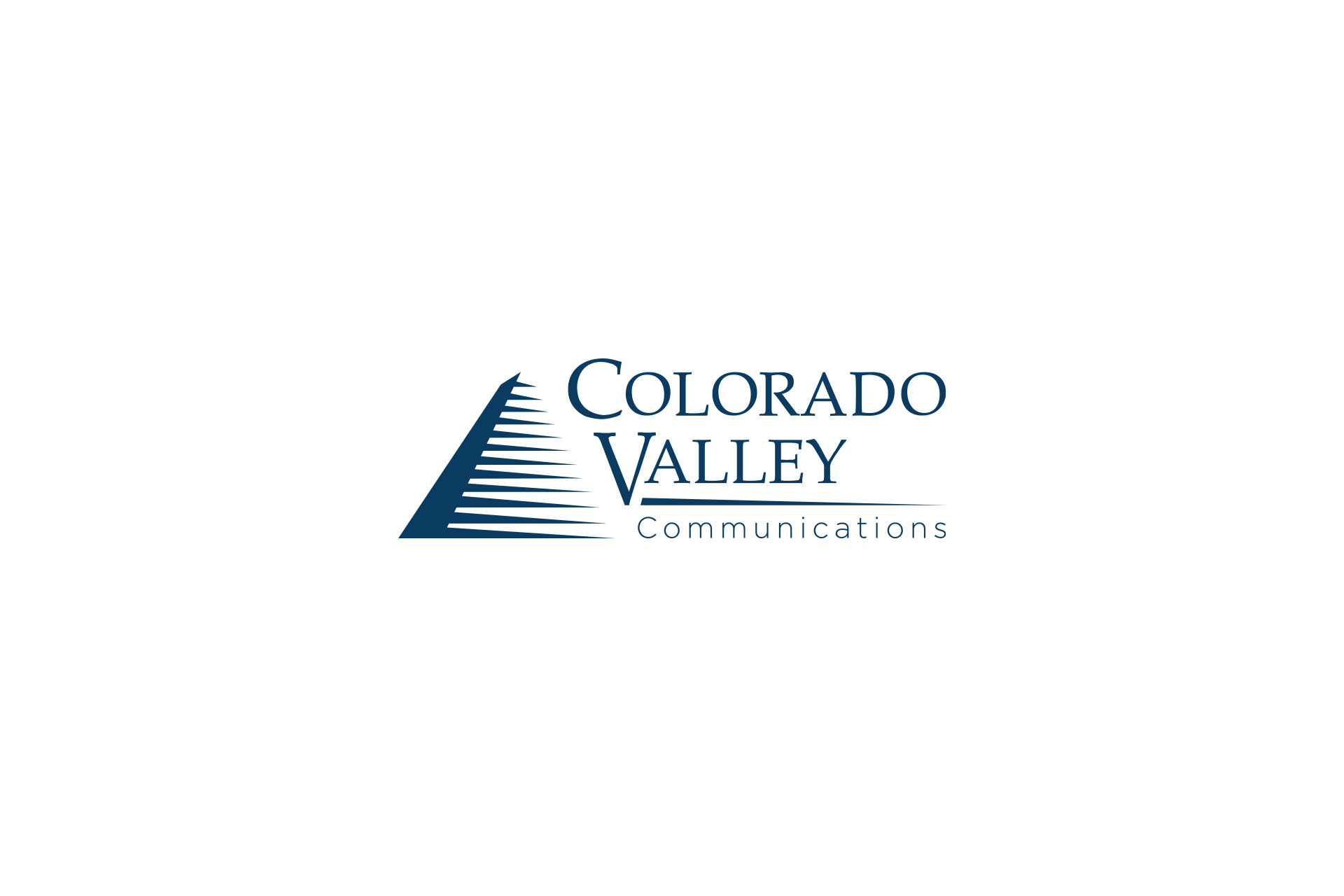
Scam Emails- Do Not Click on Any Links
Resources

Bandwidth 101
Tips

Router Placement 101
Resources

Understanding the Differences: DSL, Fiber, and Fixed Wireless Internet
Resources

Troubleshooting Your Fixed Wireless Internet Service
Resources

Troubleshooting Your DSL Internet Connection
Resources

Your 911 Service: What You Need to Know with a Modern Voice Connection
Tips

Be Prepared: Ensuring Your Voice Service Works During a Power Outage
Resources

Telephone Troubleshooting
Tips
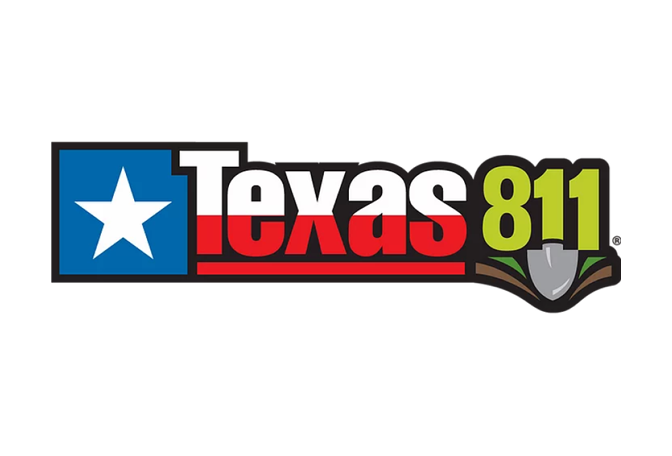

Call Before You Dig
Resources
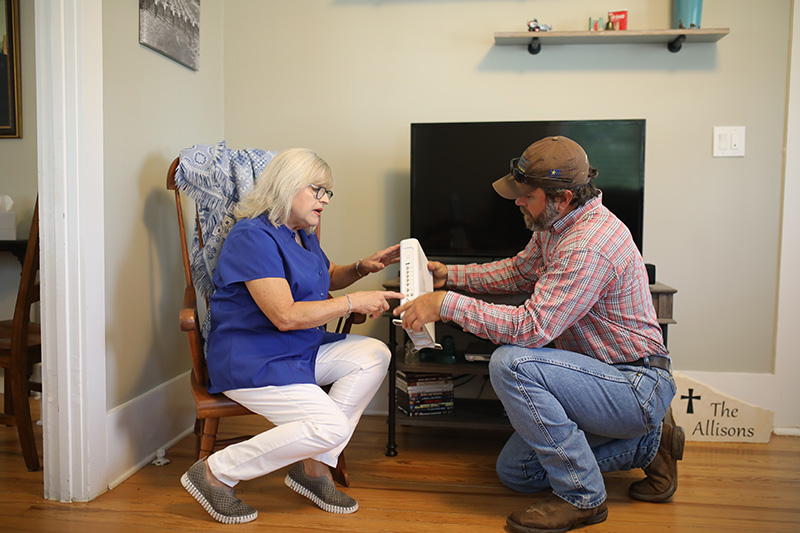

New Customer Packet
Resources

Relay Texas
Security

Reporting Illegal Online Activity: Where to Turn
Security

Combating Spam: Take Control of Your Inbox
Security

Beyond Antivirus: Essential Online Security Resources
Security

Free Online Virus Scanners: A Quick Second Opinion
Security

Free Spyware Removal: Two Essential Tools
Security

Protect Your PC for Free: A Guide to AVG Antivirus
Resources

Support for Domains Hosted by Colorado Valley Communications
Resources


Our Fiber Buildout Process
Resources
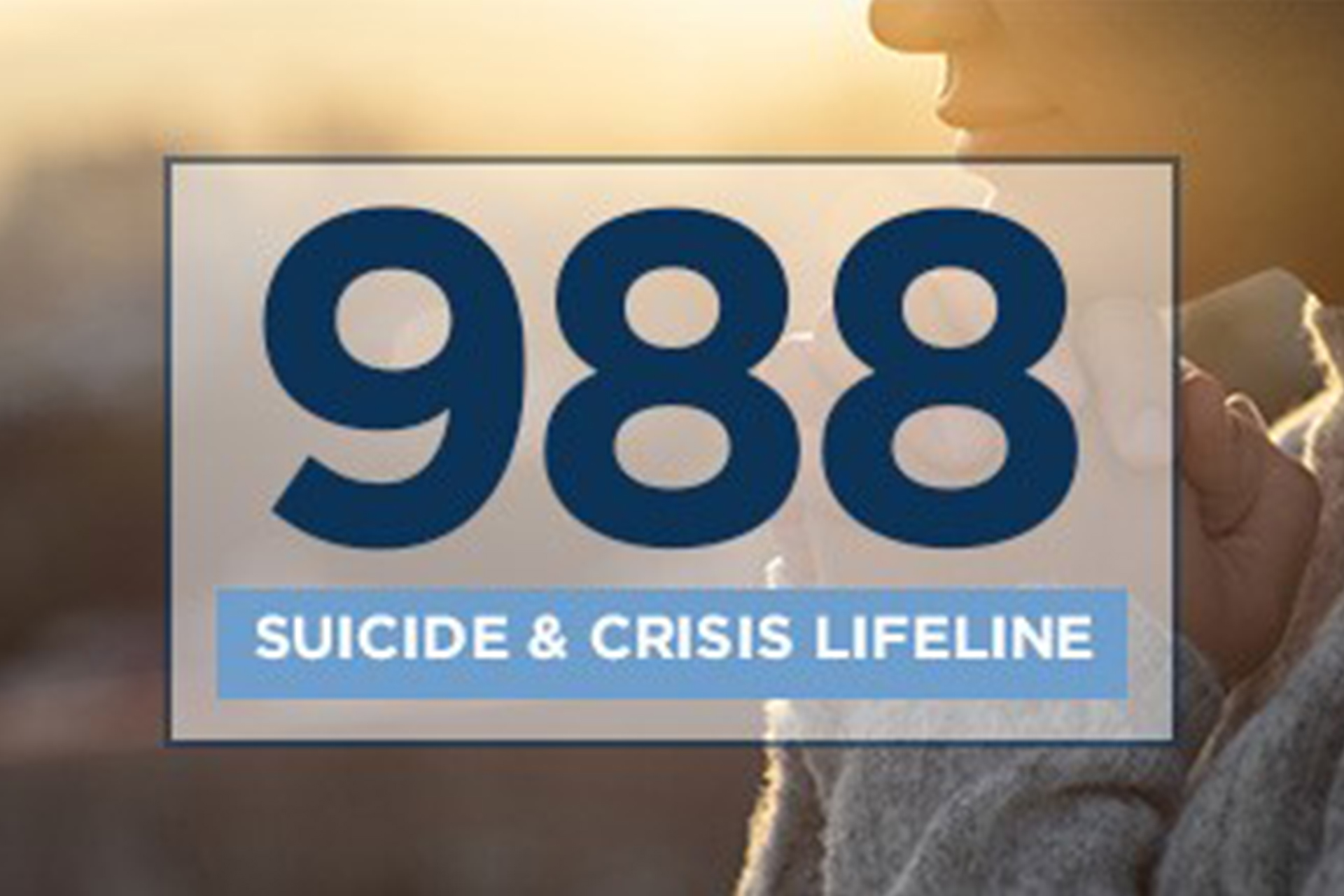

988 Suicide & Crisis Lifeline
Resources


Sign up for Customer Alert Information
Tips


Power Outages and Backup Power
Tips


Unplug Modems During Lightning Storms
Resources


Cybersecurity Coloring Book for Kids
Tips
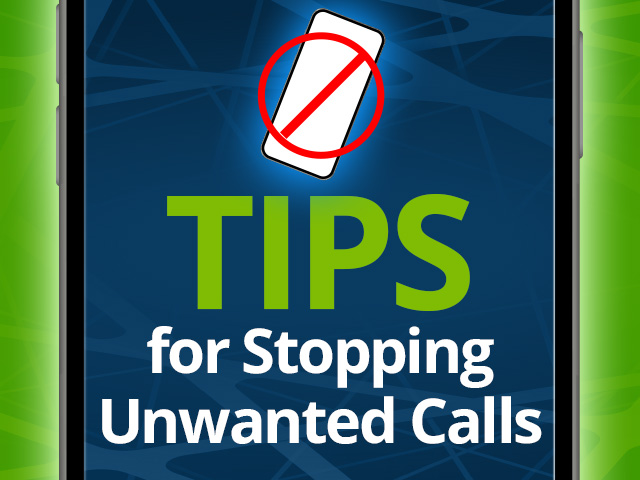

Tips for Blocking Unwanted Calls
Security


Scam Calls, Emails & Text Messages
Resources

Bandwidth 101
Resources

Understanding the Differences: DSL, Fiber, and Fixed Wireless Internet
Resources

Troubleshooting Your Fixed Wireless Internet Service
Resources

Troubleshooting Your DSL Internet Connection
Resources

Your 911 Service: What You Need to Know with a Modern Voice Connection
Resources

Telephone Troubleshooting
Resources


New Customer Packet
Resources

Relay Texas
Resources

Support for Domains Hosted by Colorado Valley Communications
Resources


Our Fiber Buildout Process
Resources


988 Suicide & Crisis Lifeline
Resources


Sign up for Customer Alert Information
Resources


Cybersecurity Coloring Book for Kids
Tips

Router Placement 101
Tips

Be Prepared: Ensuring Your Voice Service Works During a Power Outage
Tips


Call Before You Dig
Tips


Power Outages and Backup Power
Tips


Unplug Modems During Lightning Storms
Tips


Tips for Blocking Unwanted Calls
Security


Scam Emails- Do Not Click on Any Links
Security

Reporting Illegal Online Activity: Where to Turn
Security

Combating Spam: Take Control of Your Inbox
Security

Beyond Antivirus: Essential Online Security Resources
Security

Free Online Virus Scanners: A Quick Second Opinion
Security

Free Spyware Removal: Two Essential Tools
Security

Protect Your PC for Free: A Guide to AVG Antivirus
Security


Scam Calls, Emails & Text Messages
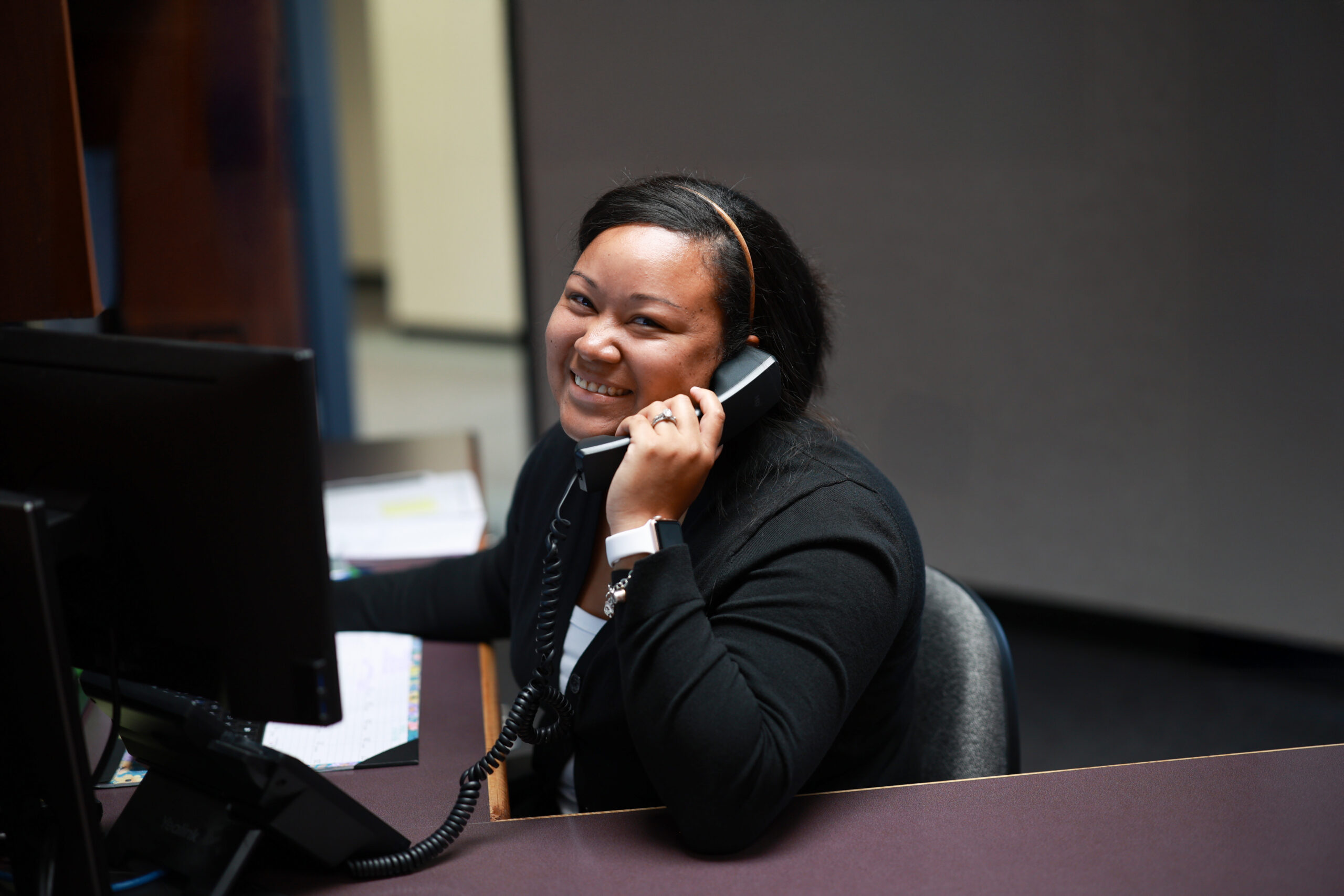
Get in Touch with Our Local Team
Need a hand? Fill out the form below and one of our friendly folks will reach out soon. Whether it’s a quick question or something more involved, we’re here to help.

